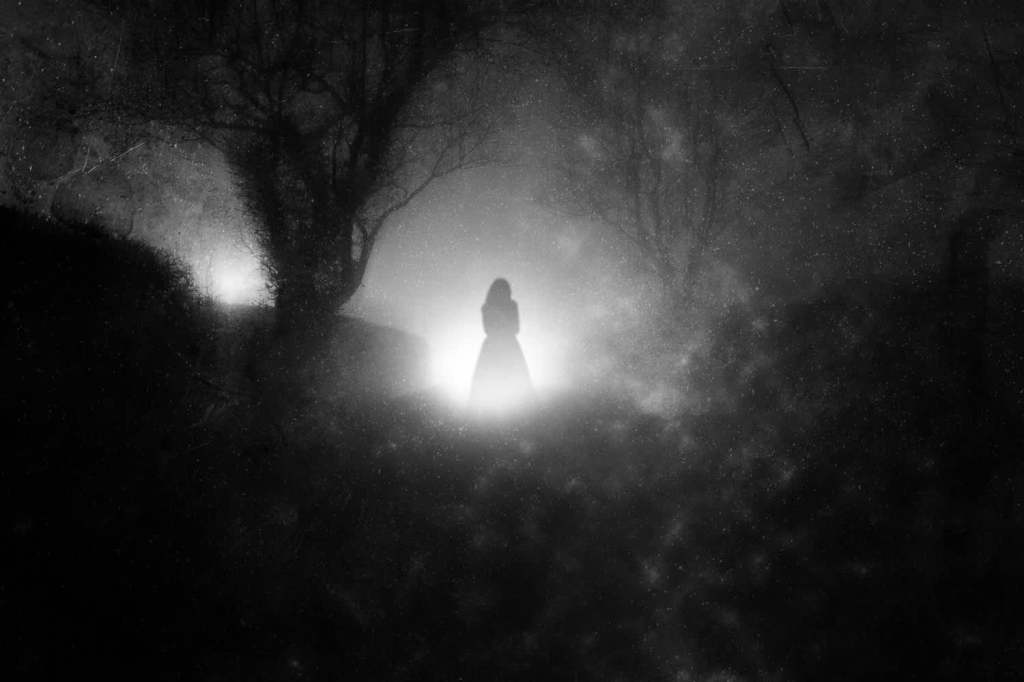We’ve surely all got at least one friend who claims to have had some kind of paranormal encounter. Whether that’s hearing footsteps in an otherwise empty house, feeling the ‘presence’ of something or someone who isn’t there, or maybe having objects mysteriously disappear or reappear — the belief in the supernatural is actually surprisingly common.
A survey published last month by McCrindle Research for the Centre for Public Christianity found almost half of Australians believe that ghosts exist or are at least open to the possibility that they do.
During the pandemic, there were even reports of paranormal experiences increasing, as people spent more time at home and could not escape the strange goings-on in their own homes.
We spoke with Michael Chaves, the director of the new supernatural horror film, The Conjuring: The Devil Made Me Do It, to find out more about paranormal encounters and the real-life stories that the iconic Conjuring films are based upon.
How Do You Know If You’ve Had a Paranormal Encounter?

Chaves himself is agnostic about the paranormal. Raised Catholic, he said that he never really had to answer the question of whether or not he believes the famous paranormal cases investigated by real-life ghost-busting duo, Ed and Lorraine Warren, were true.
In order to get into the mindset of the apparently haunted individuals his film is based upon, he played the real-life audio of an exorcism that was conducted on an 11-year-old boy, David Glatzel, whom we see at the start of the film. The audio clip was also played for The Latch during the press meeting and we can confirm that it is indeed unsettling.
“That’s untreated,” Chaves said. “That’s the real exorcism that the Warrens were there for. We played that on set and it was funny because everyone always asks the classic press questions, ‘Did anything spooky happen on set?’. I have to say Iwas the spooky thing that happened on set.”
In the slightly muffled clip, we hear 11-year-old Glatzel screaming and shouting while a priest commands the ‘spirit’ within him to leave.
“We played that for people, just to get everyone in the mood, and you could feel the temperature in the room change. Everybody just got chills listening to that.
“Back to the question of belief and what I believe in, I don’t know exactly what I believe. But that’s messed up.”
In the real-life cases that the Conjuring films are based on, people claim to have experienced all sorts of bizarre phenomena. From disembodied voices, to creatures with red eyes lurking in the shadows, right through to levitation and full-blown possession, it’s clear that something terrible has happened to these people.
However, there are good reasons to believe that whatever might be happening is not paranormal. As the Warrens themselves would do, the first step should be checking whether there is something wrong with the house physically. Is there a leaking pipe somewhere that could be causing a bad smell? Is there an appliance that is faulty and keeps turning on or off?
The next step would be making sure that the person who is experiencing the paranormal phenomena is not experiencing some kind of mental health-related issue. Speaking with a doctor or psychiatrist would be a good move to understand if what is happening is actually real.
What Would You Do If You Thought You Were Being Haunted?
When there’s something strange in your neighbourhood, who you gonna call? Chaves notes that the Warrens became so famous in their work as paranormal investigators that they would be called in to work with police departments on missing persons cases.
“So much so that either the Department of Justice or the FBI actually issued a handbook on working with psychics,” Chaves said.
Back when the Warrens started out in the 1940s, paranormal investigators were very much underground. They were the first people to really talk publicly about their work, mainly due to the fact that others feared the ridicule and derision of the public.
Now though, we’re absolutely inundated with ghost hunting TV shows and documentaries that you probably wouldn’t have to look far to find someone to investigate your haunting.
“We’re definitely in a time where people are so polarised. I think even when you start to put claims of faith out there, you definitely come under so much scrutiny. I wonder who you would call if you really experienced something like this,” Chaves said.
In Australia, there are a number of working exorcists who can be called upon to perform ritual removals of bad spirits. One of whom is Queensland exorcist, Peter Whiffin, who has been ridding people of bad spirits for over 25 years. Another exorcist, Lizzy Rose from Victoria, claims to have exorcised over 5,000 people across Australia.
The Vatican itself trains priests to perform exorcisms with the permission of a bishop. Much of the exorcisms conducted by the Catholic Church – and there are a lot of them – are shrouded in secrecy and mystery according to strict Catholic protocols.
The Vatican has an official 84-page book, Of Exorcisms and Certain Supplications, which details sacramental rites for exorcism that have been endorsed by the Pope. The Archbishop of Hobart has also written a book for priests, the Manual of Minor Exorcisms and has performed exorcisms as Auxiliary Bishop of Sydney.
Read more stories from The Latch and subscribe to our email newsletter.







